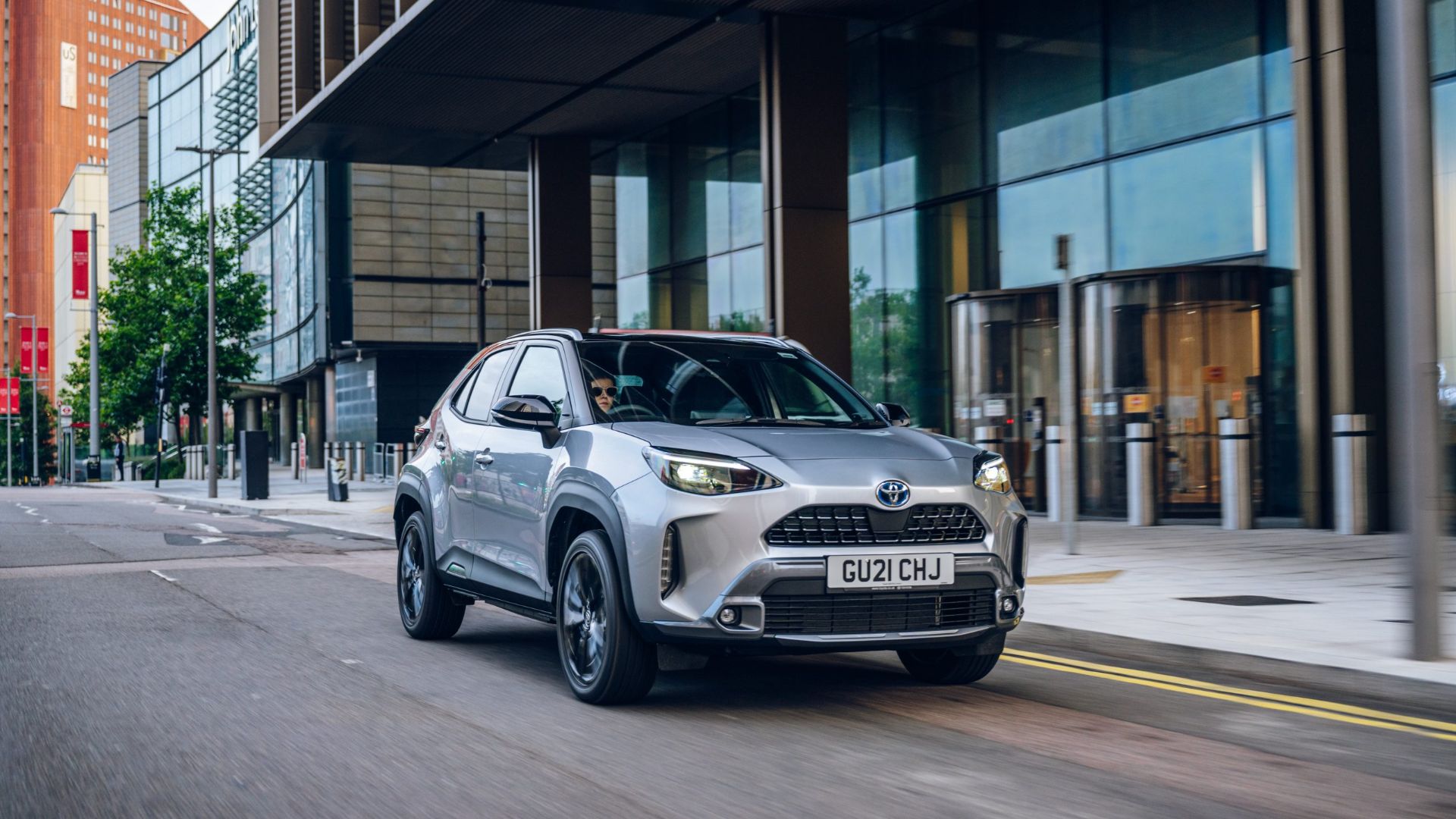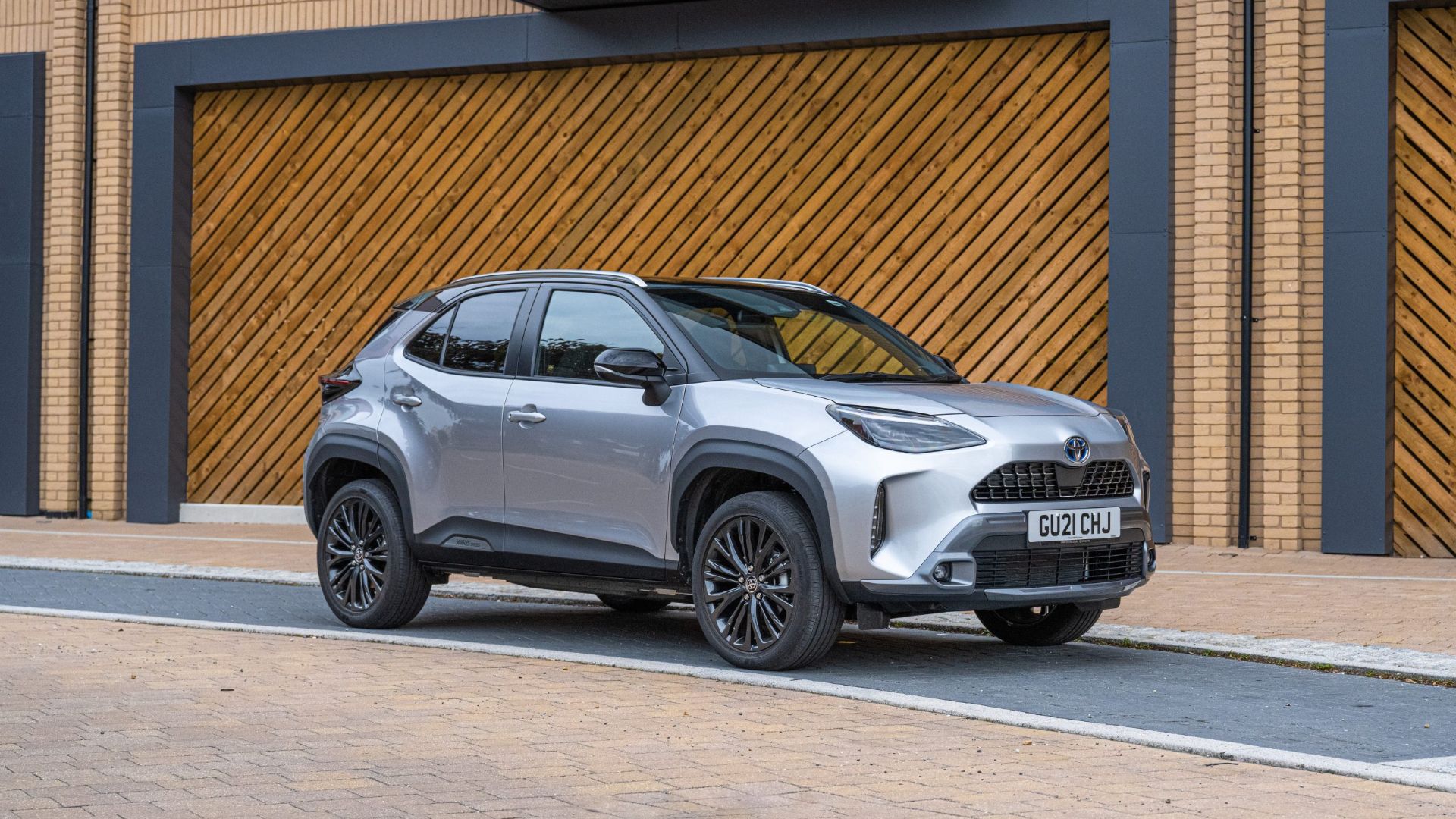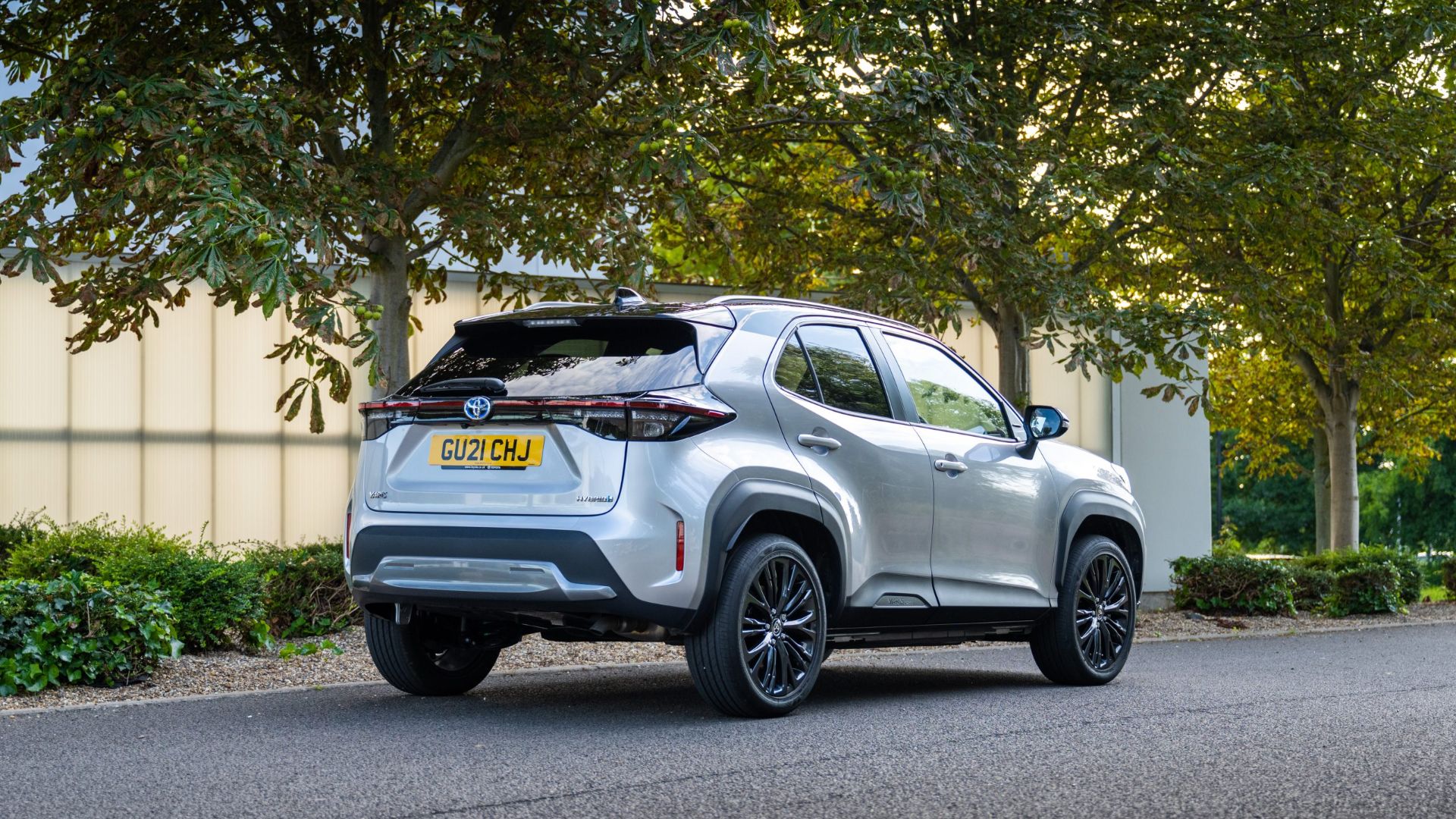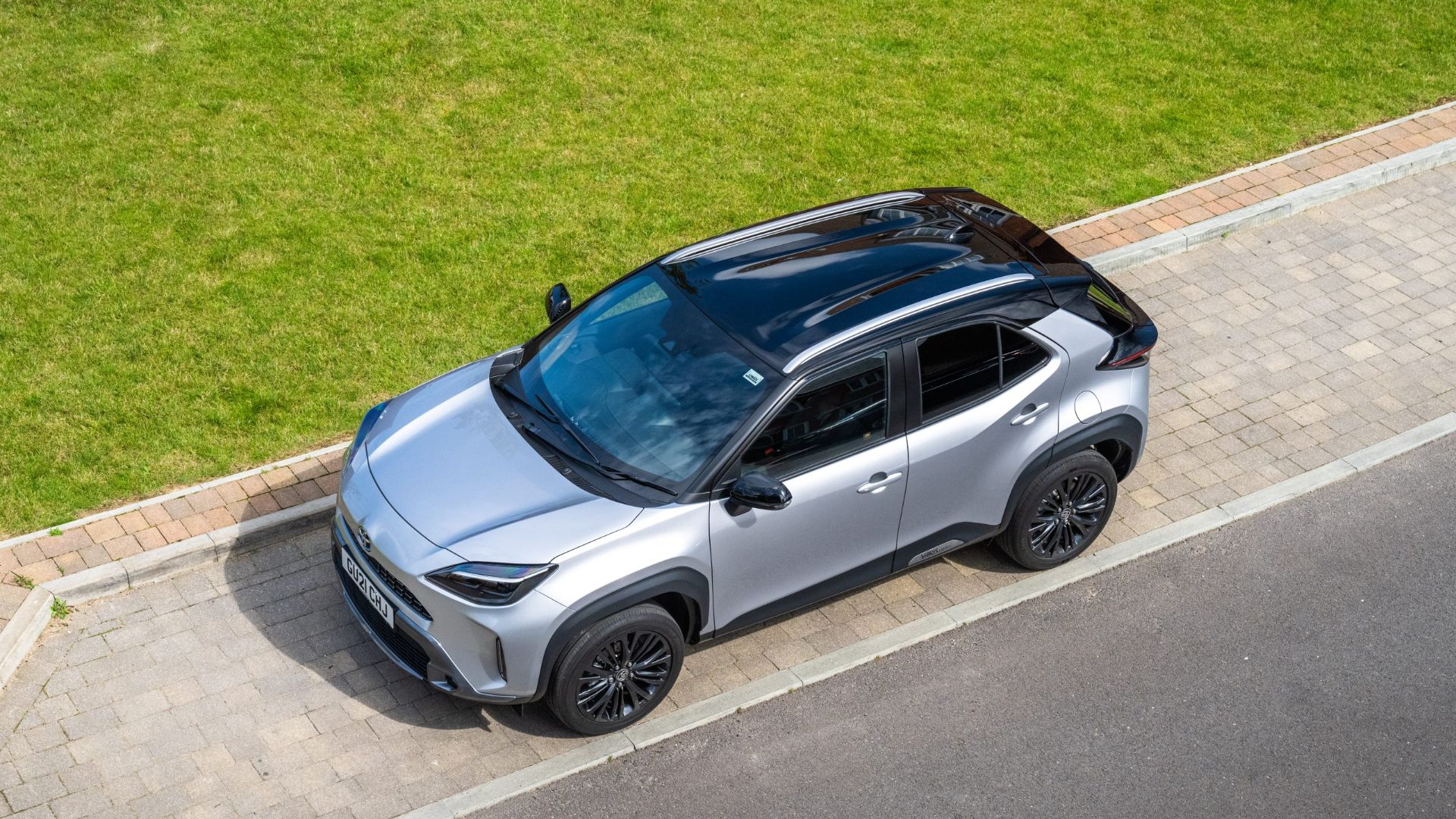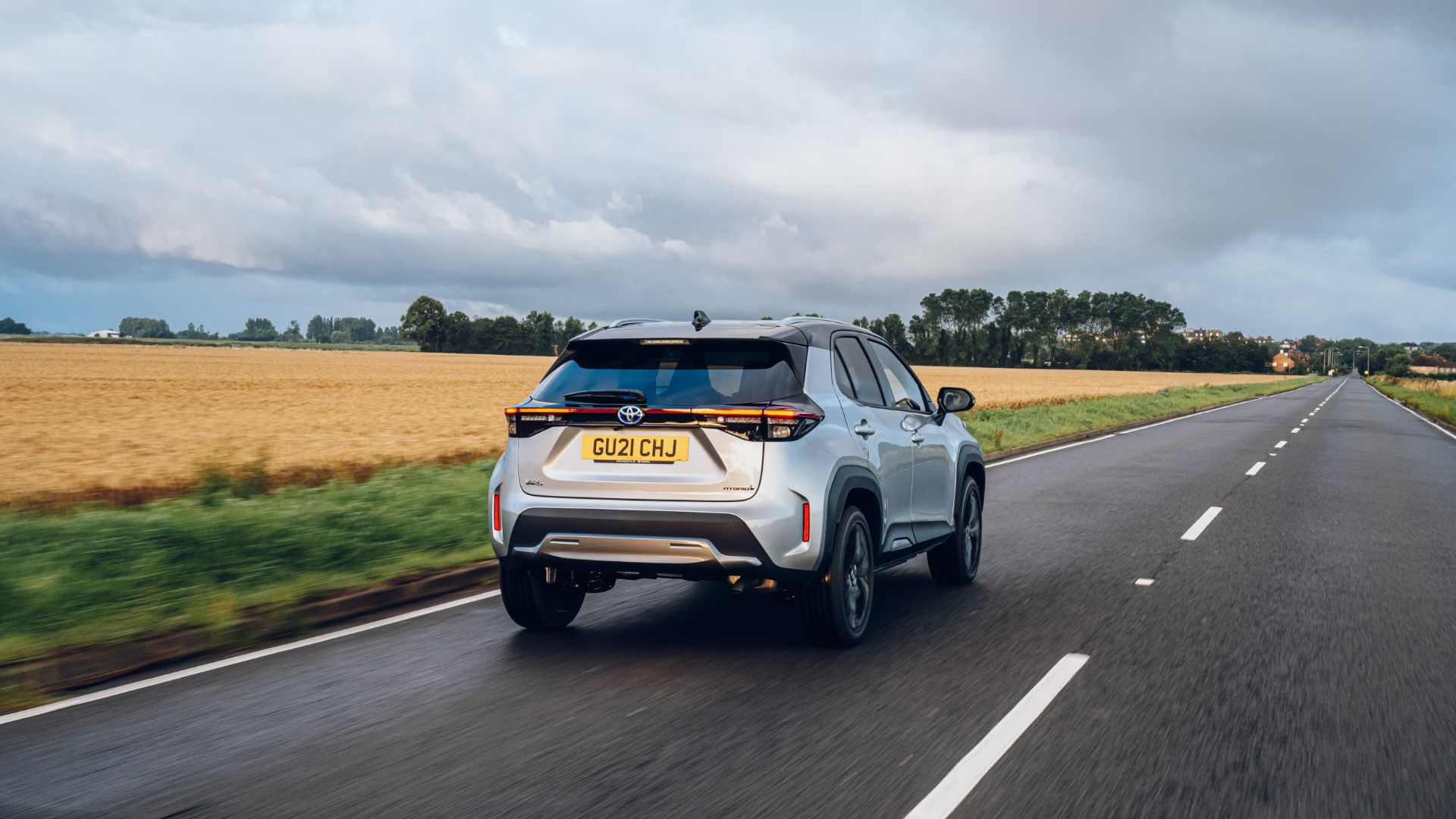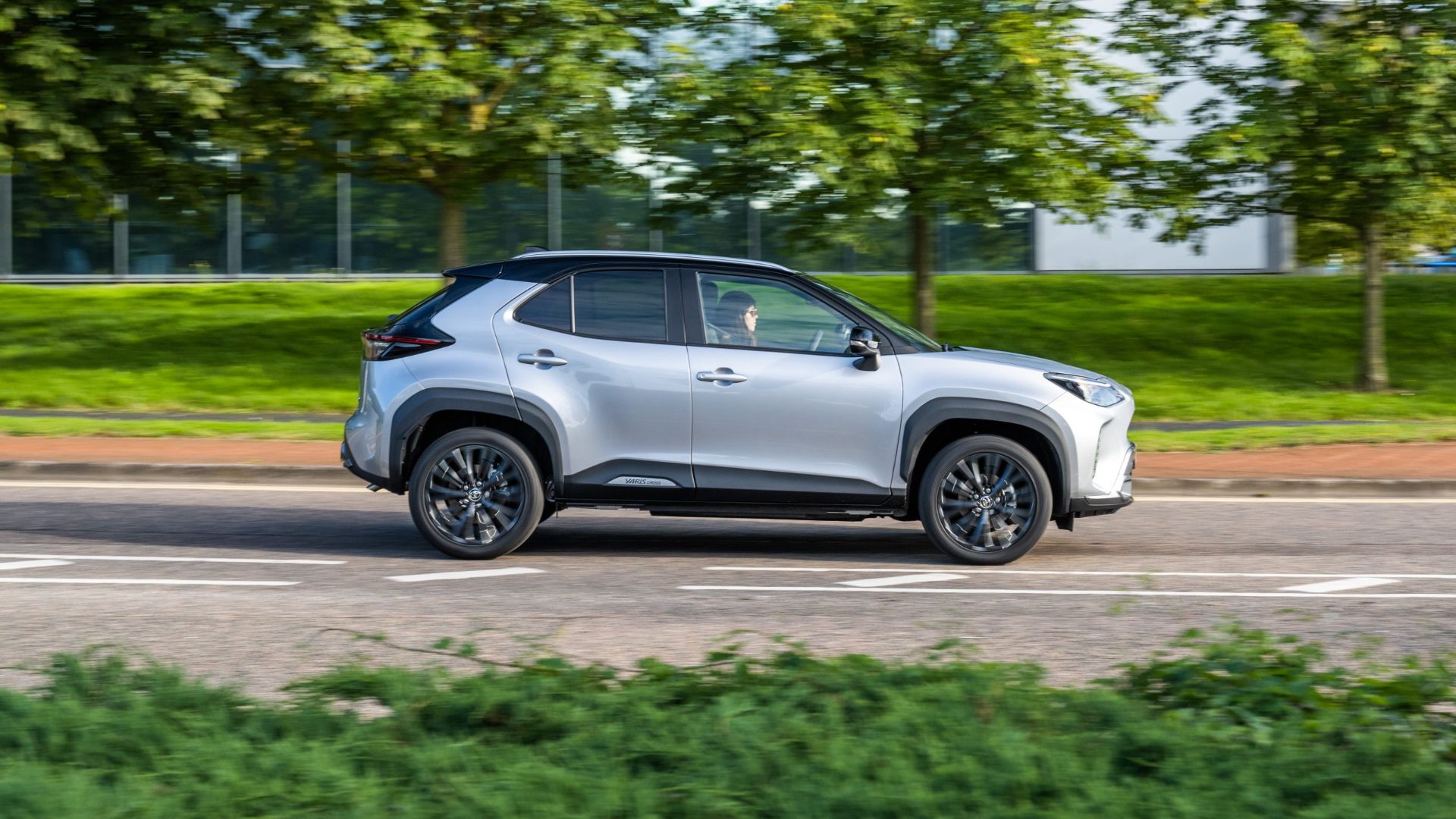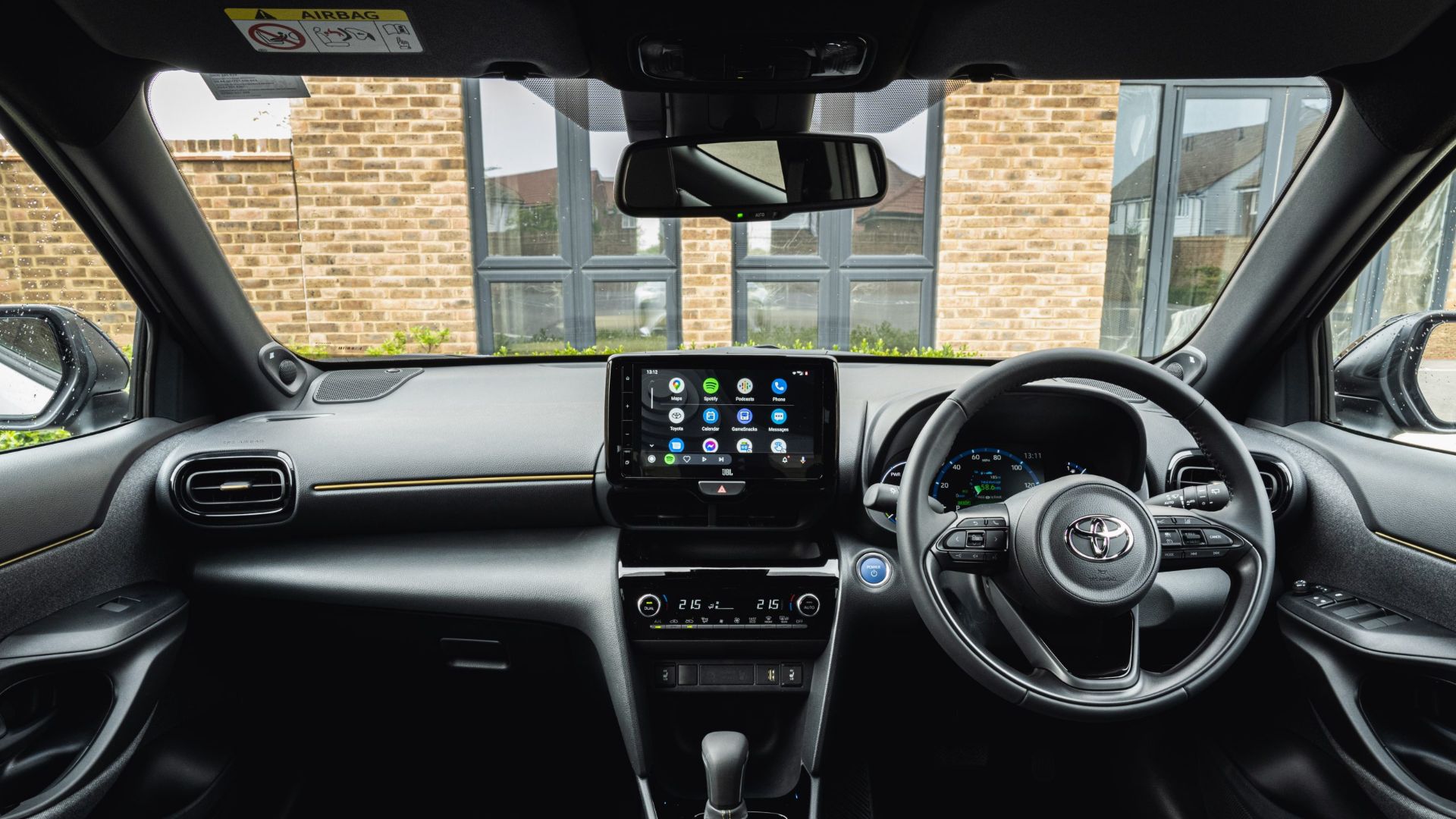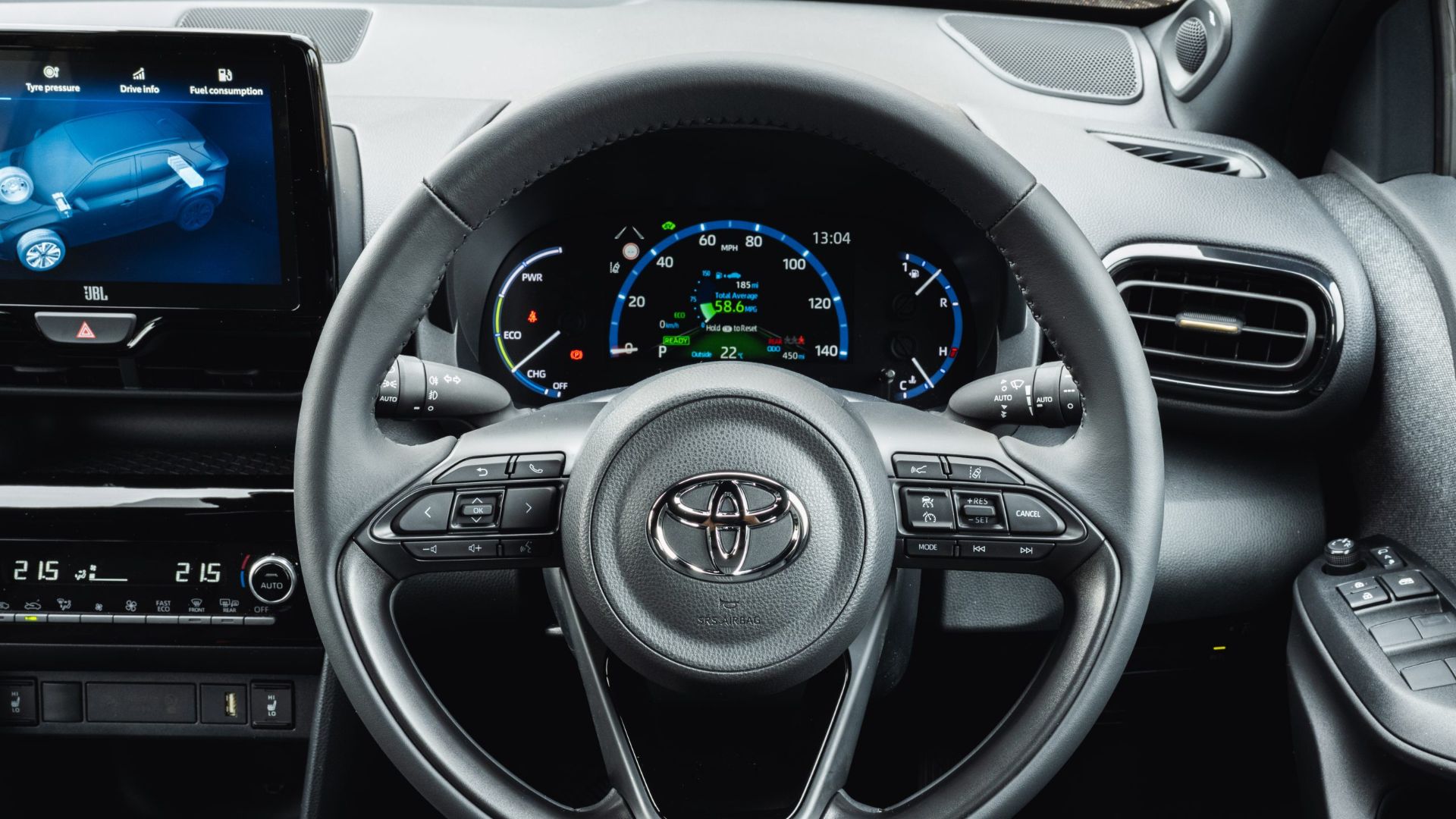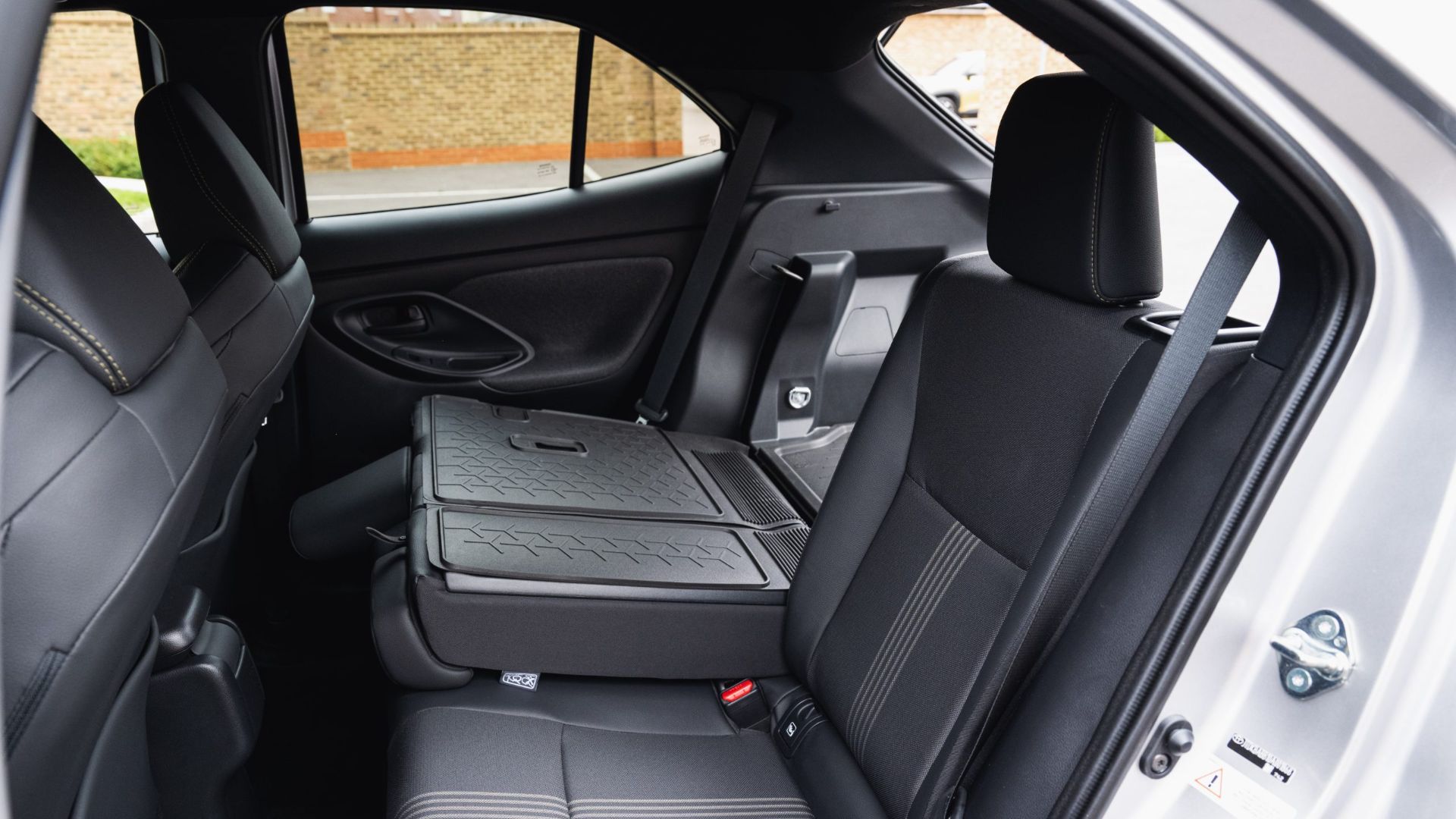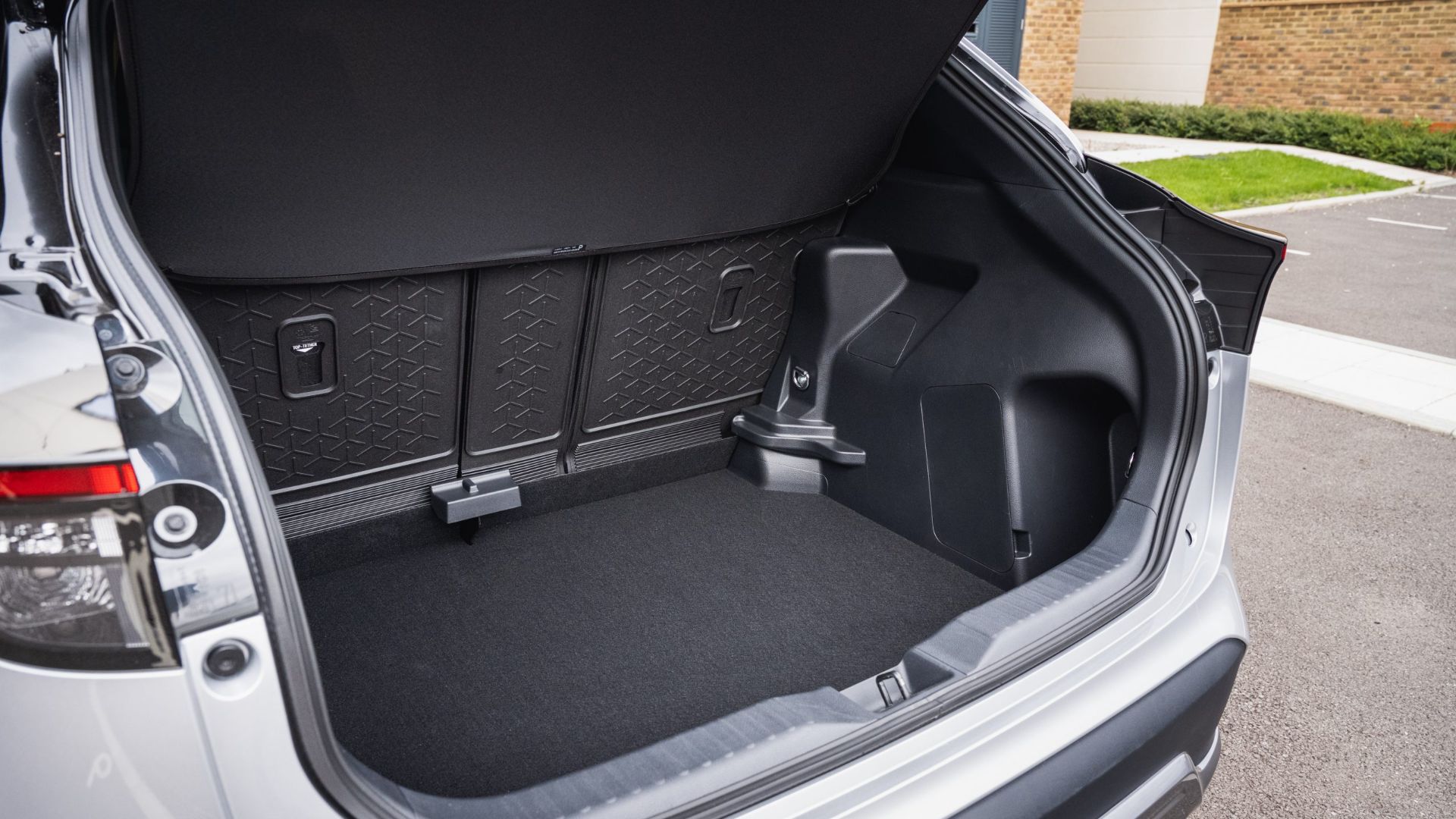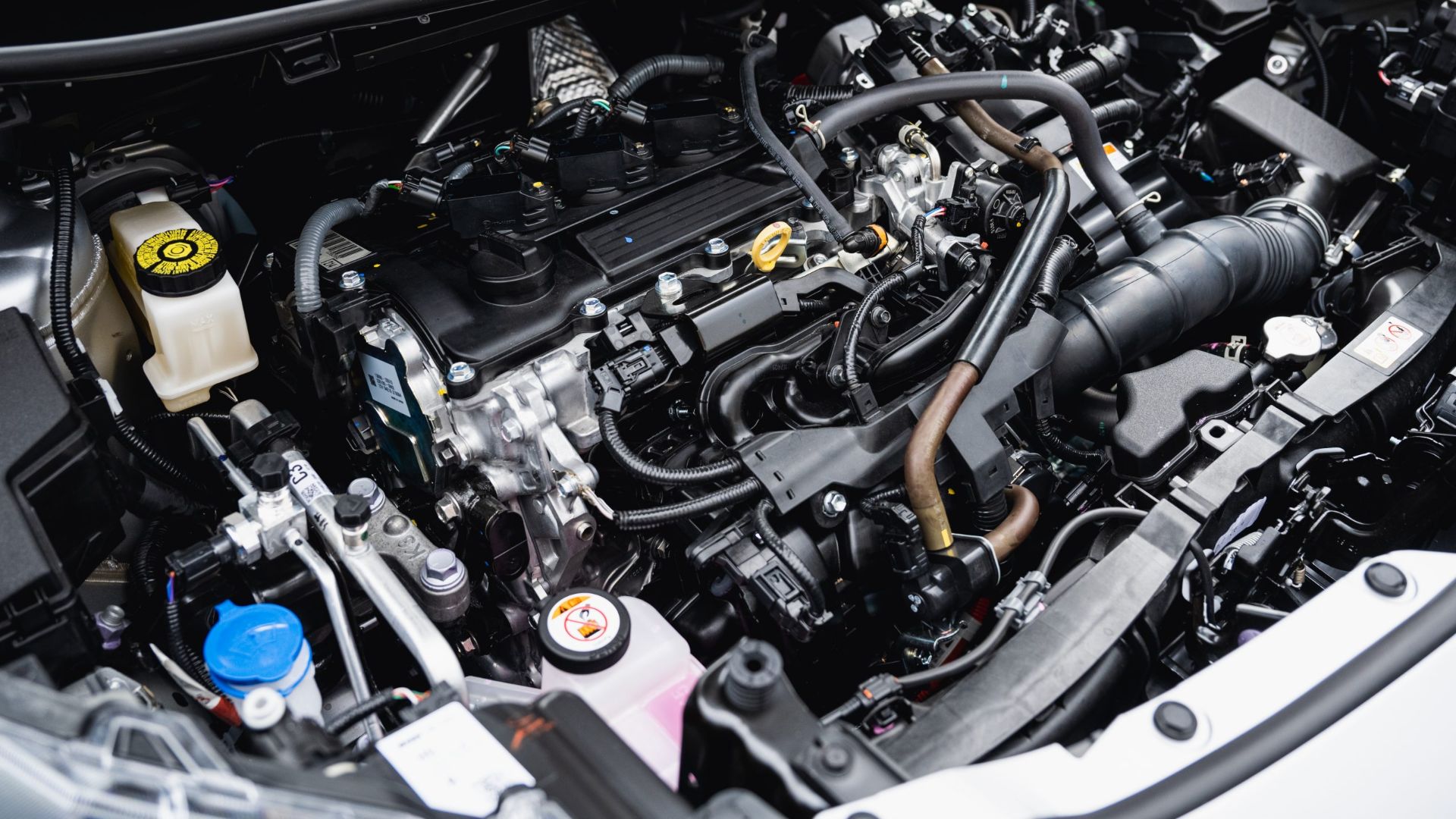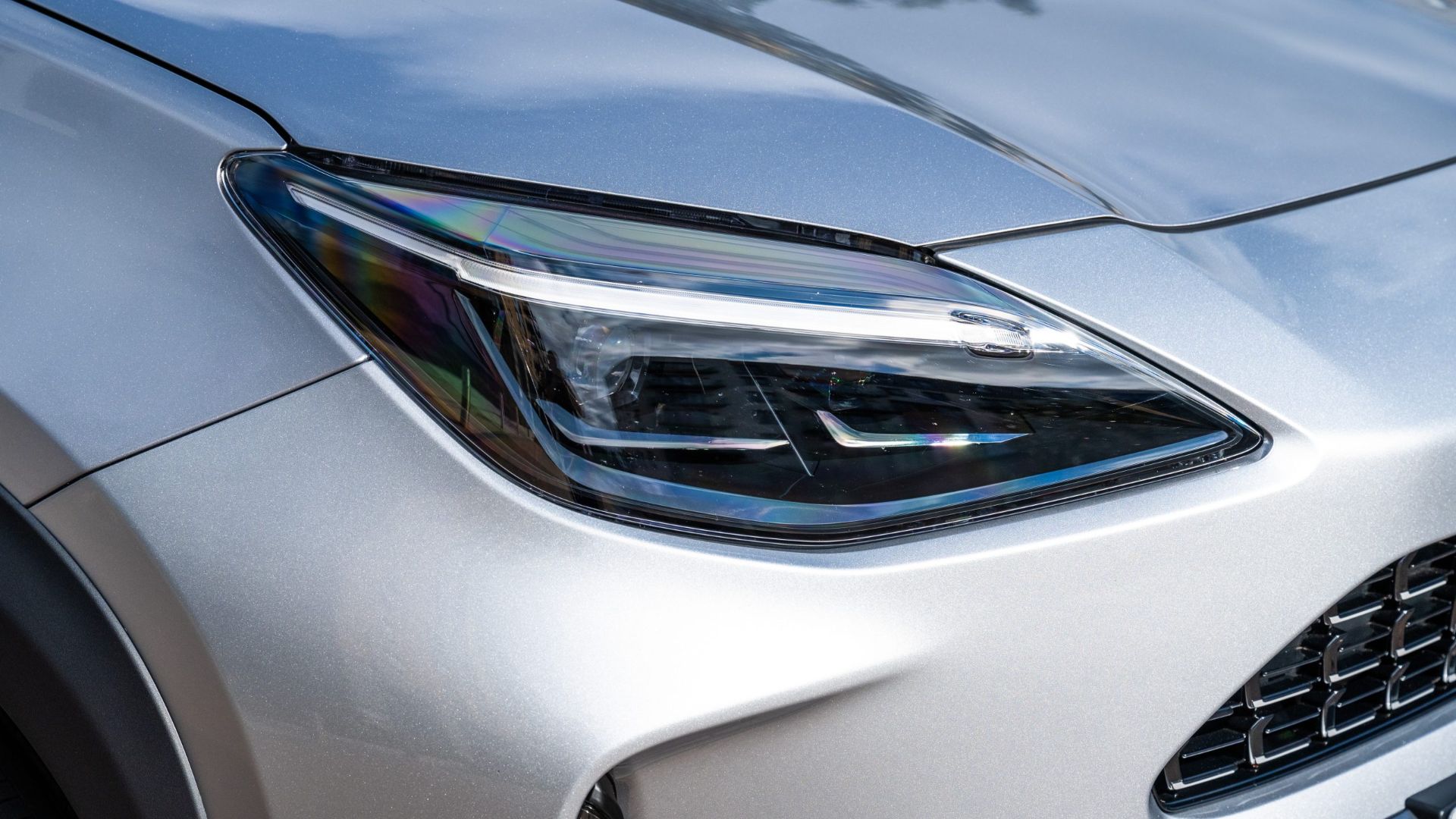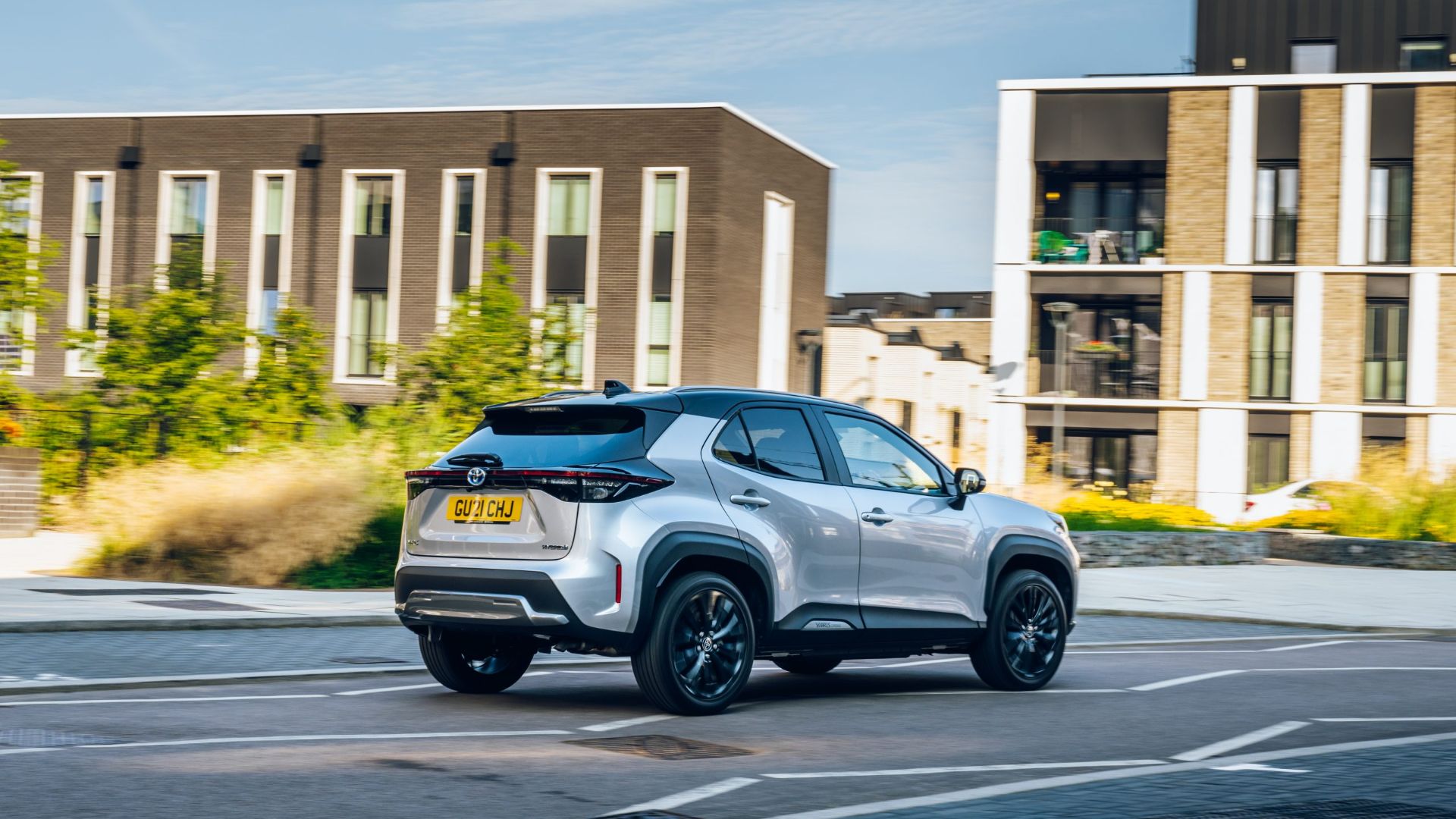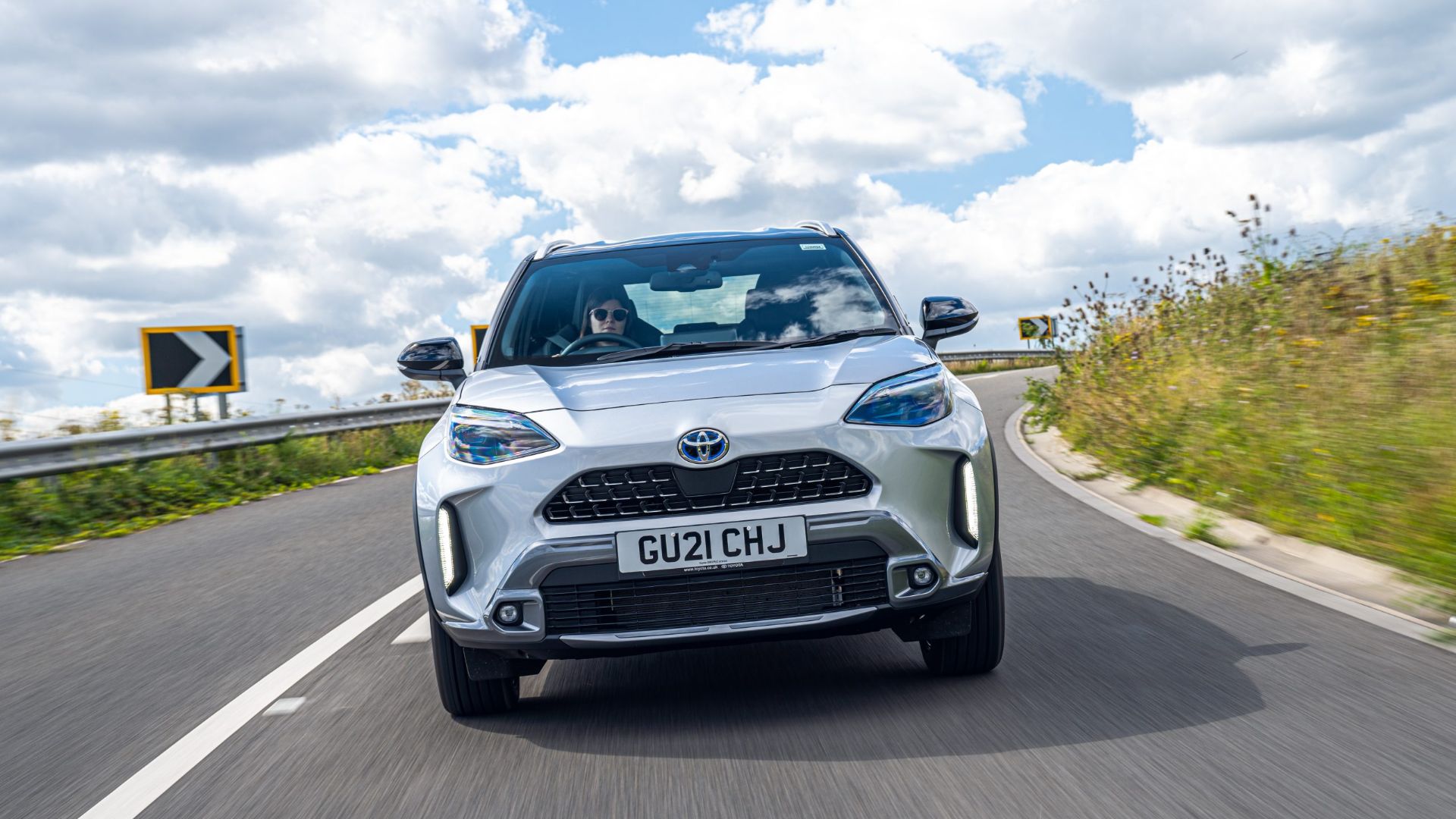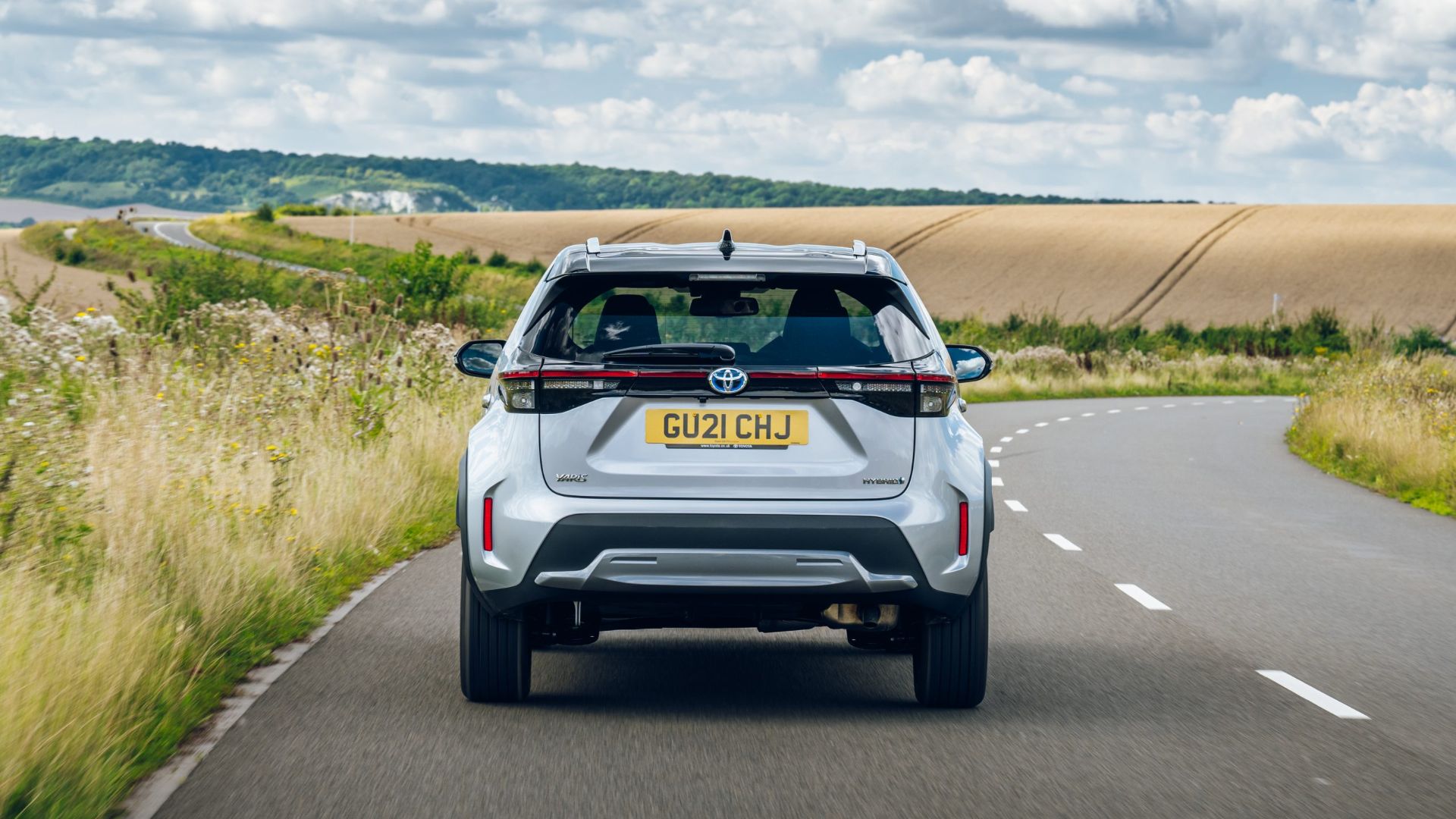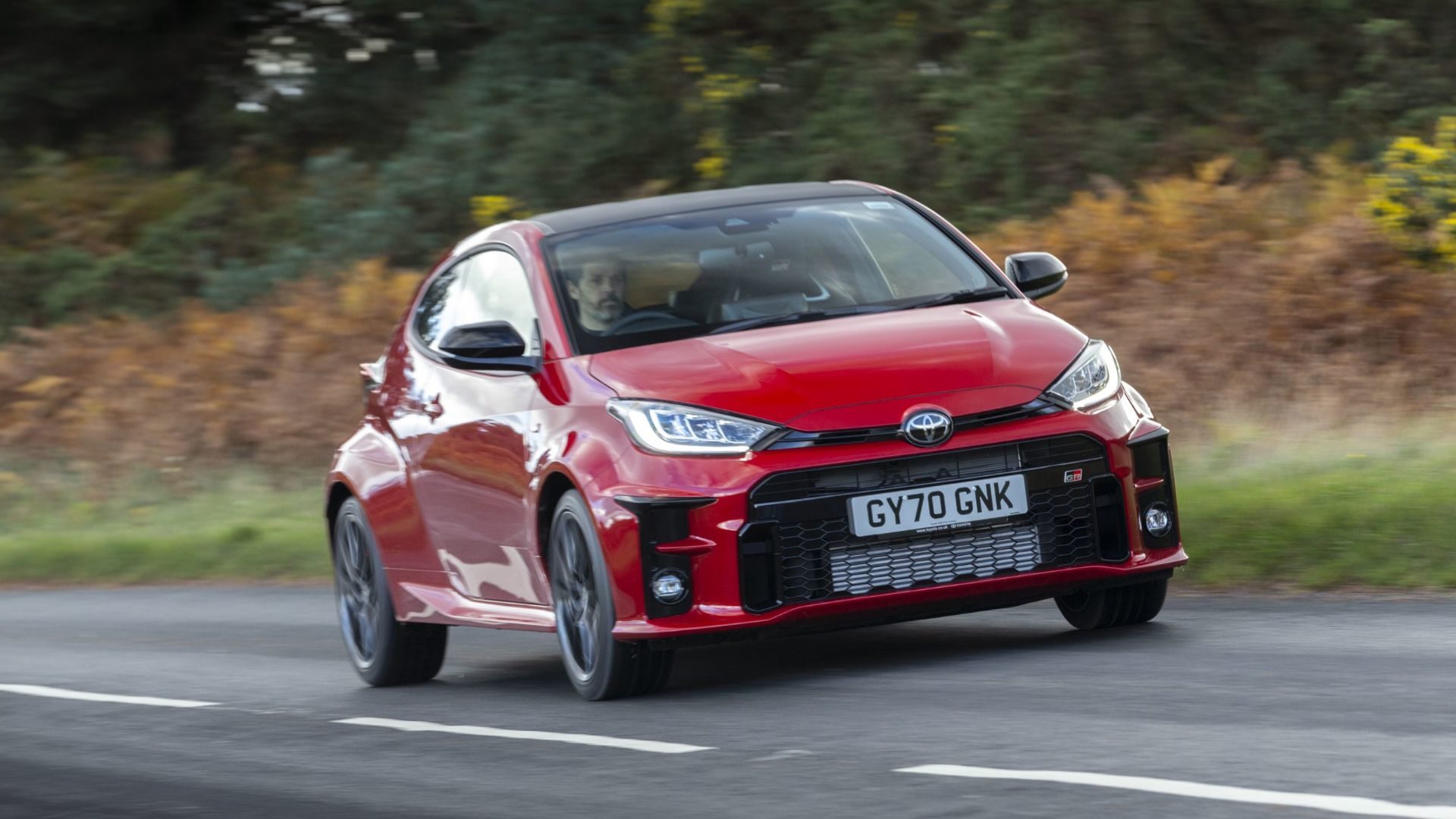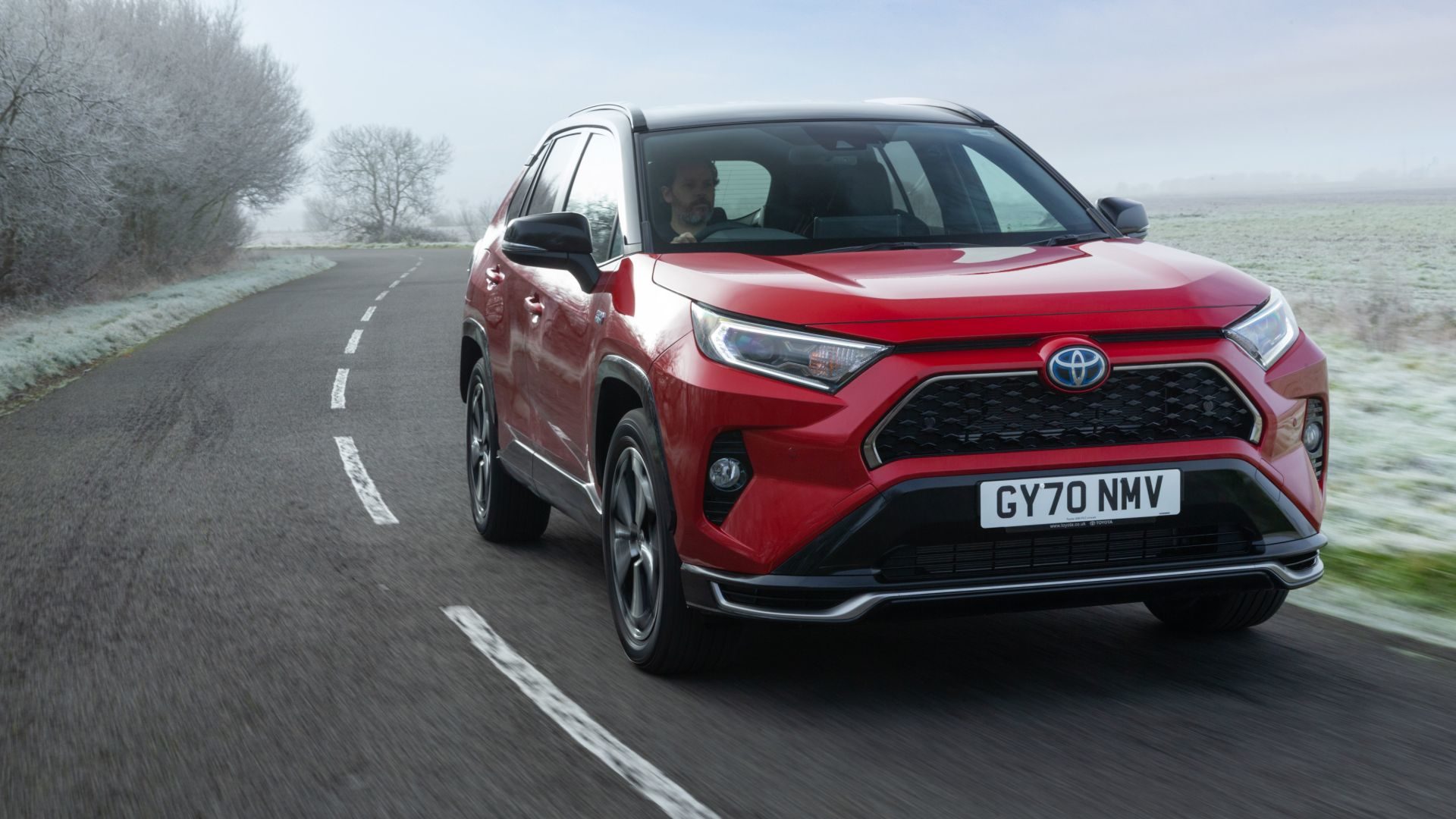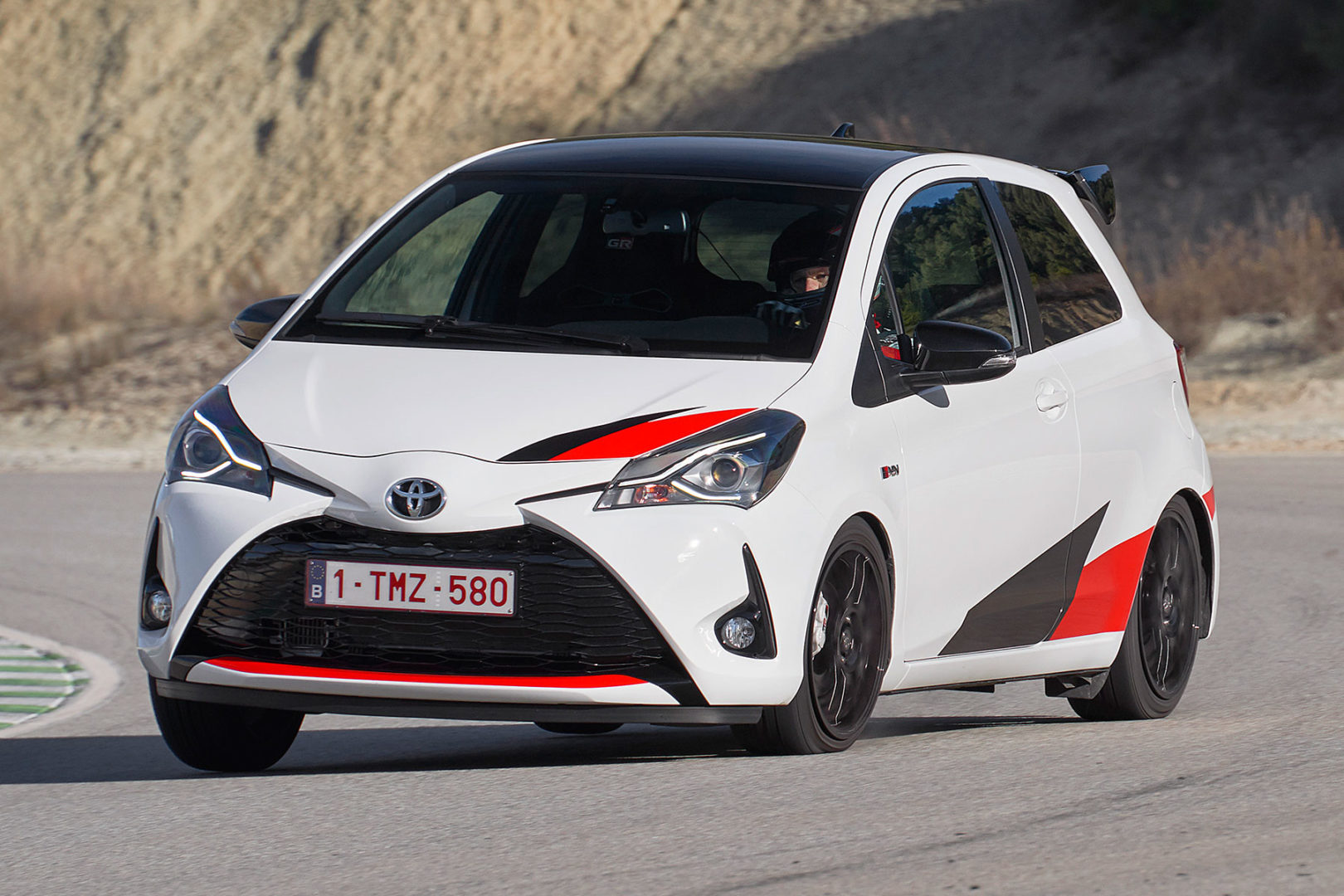Sometime in 2010, I awoke to discover three Nissan Jukes parked nose-to-tail outside my window. Squat, bug-eyed and willfully ugly, they looked like deep-sea mutants with number plates. It was tempting to close the curtains.
Seeing the street full of Nissans wasn’t unusual – we live close to a Nissan main dealer – but 11 years ago, the Juke was something new and different: a supermini-sized SUV. “It’ll never catch on,” I thought.
Today, there are probably three Jukes on every suburban street and most small cars have a high-riding sibling. Notable names include the Ford Puma, Volkswagen T-Cross, Skoda Kamiq, Mazda MX-30, Peugeot 2008… and now the Toyota Yaris Cross.
A solid start
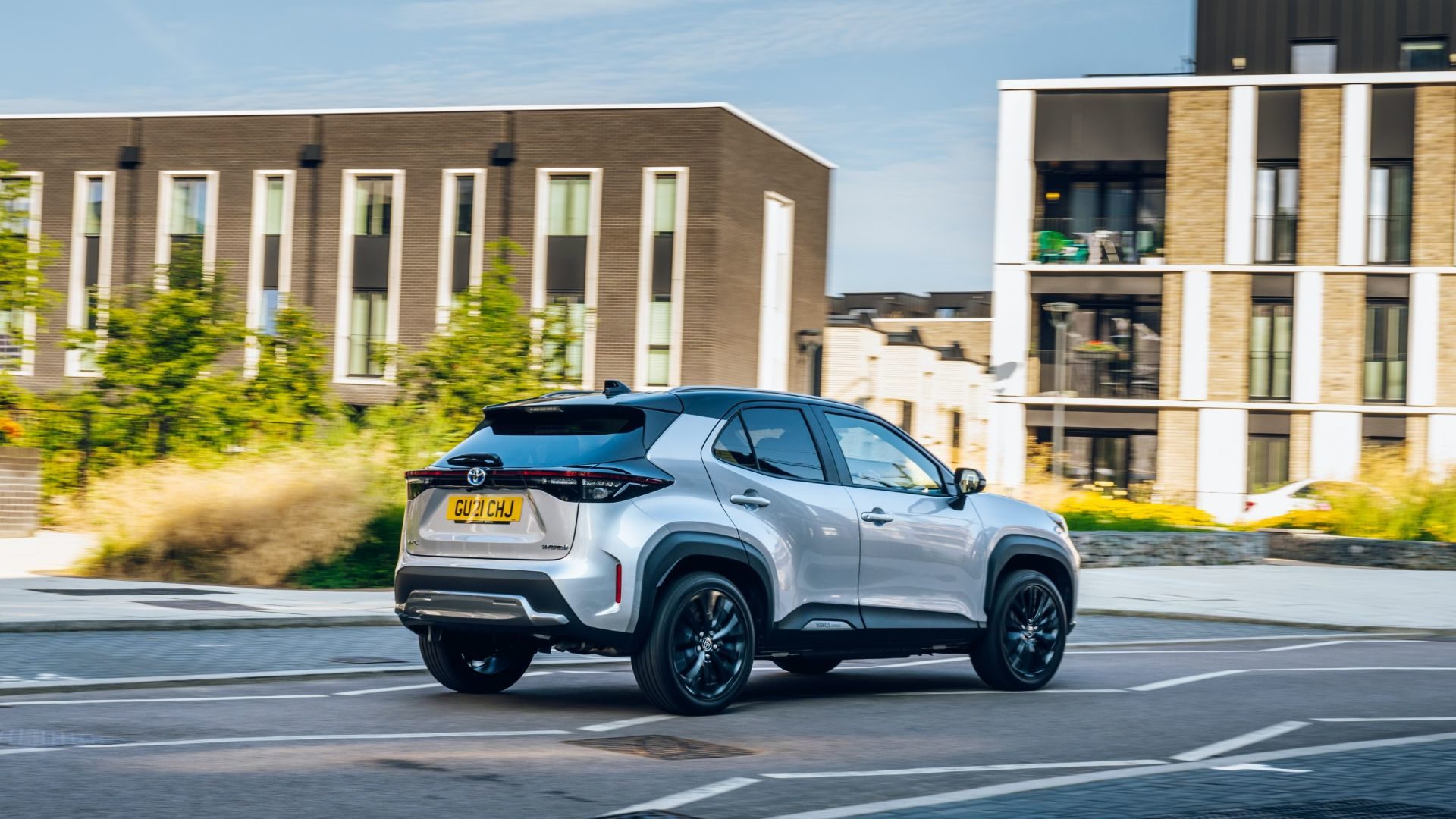
Remember the Urban Cruiser? No, thought not. Toyota’s first attempt at a small SUV, launched in 2008, sank almost without trace. Just 26 are listed for sale on Auto Trader at the time of writing, out of 14,453 Toyotas in total.
The Yaris Cross shouldn’t suffer the same fate. Firstly, because its mix of rugged styling and hybrid efficiency is bang on the zeitgeist. And secondly, because it’s based on the excellent new Yaris: the reigning European Car of the Year and one of our favourite superminis.
Prices start from £22,515, or around £229 a month on PCP finance, with the first cars already in showrooms. My test car was in relatively modest Design spec with a handful of options.
Gym’ll fix it
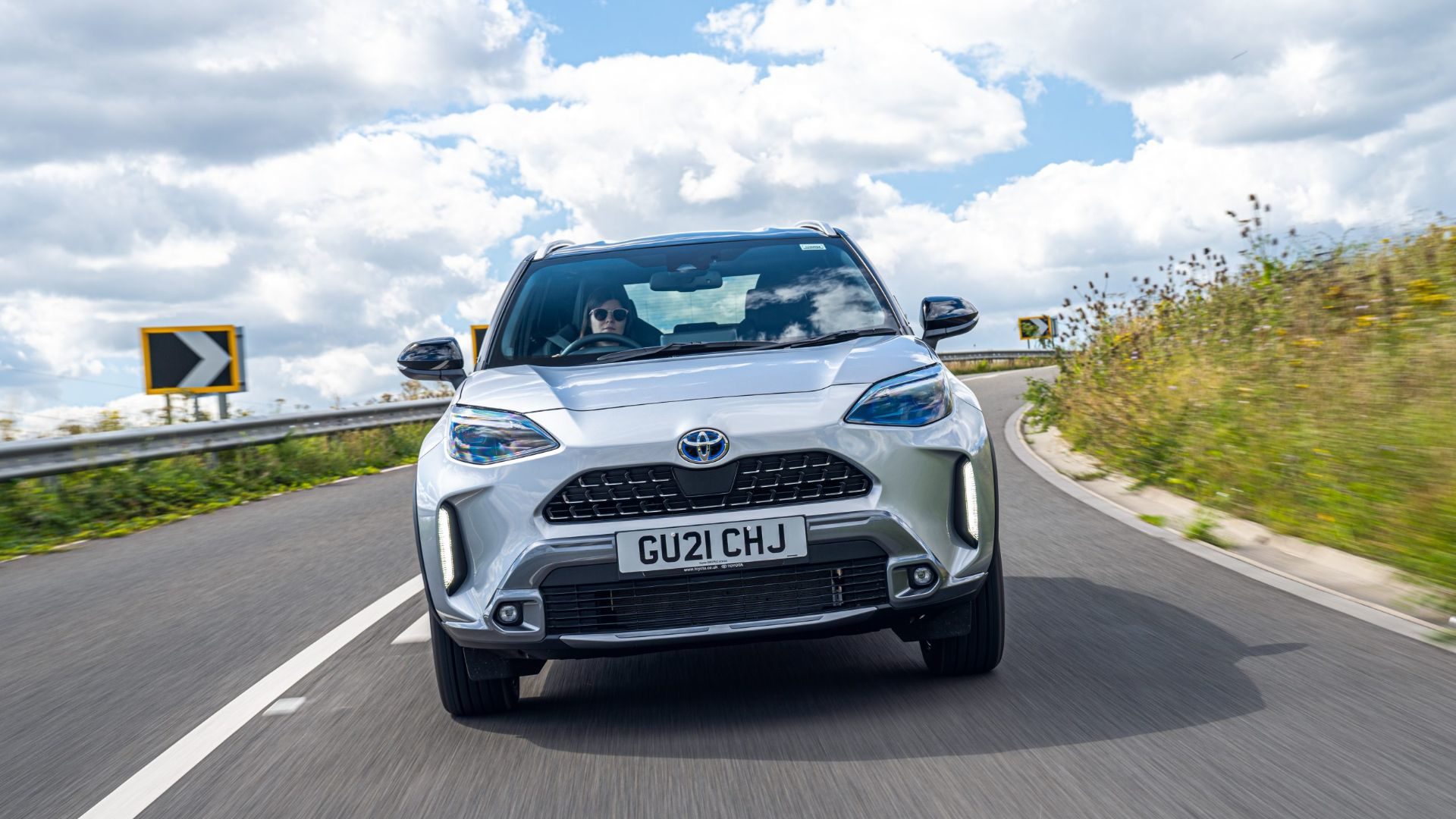
Like a Yaris after six months of press-ups and protein shakes, the Cross has grown bigger and beefier. Chunky bumpers, squared-off wheelarches and roof rails tick all the SUV boxes. It’s more upright and conventional than the Toyota C-HR, with a clear family resemblance to the larger RAV4.
The Cross shares its TNGA-B platform, 116hp petrol hybrid drivetrain and e-CVT automatic gearbox with the Yaris supermini, but adds the option of four-wheel drive. Its wheelbase is identical, but this car is 240mm longer and 20mm wider. It also has 30mm more ground clearance and is 90mm taller overall.
All this means a roomier cabin and bigger boot: up from 286 litres to 397 litres – more than a Volkswagen Golf. Practical touches include a 40:20:40 split-fold rear seat and, on higher-spec models, a power tailgate with hands-free ‘kick’ opening.
Ready for Adventure
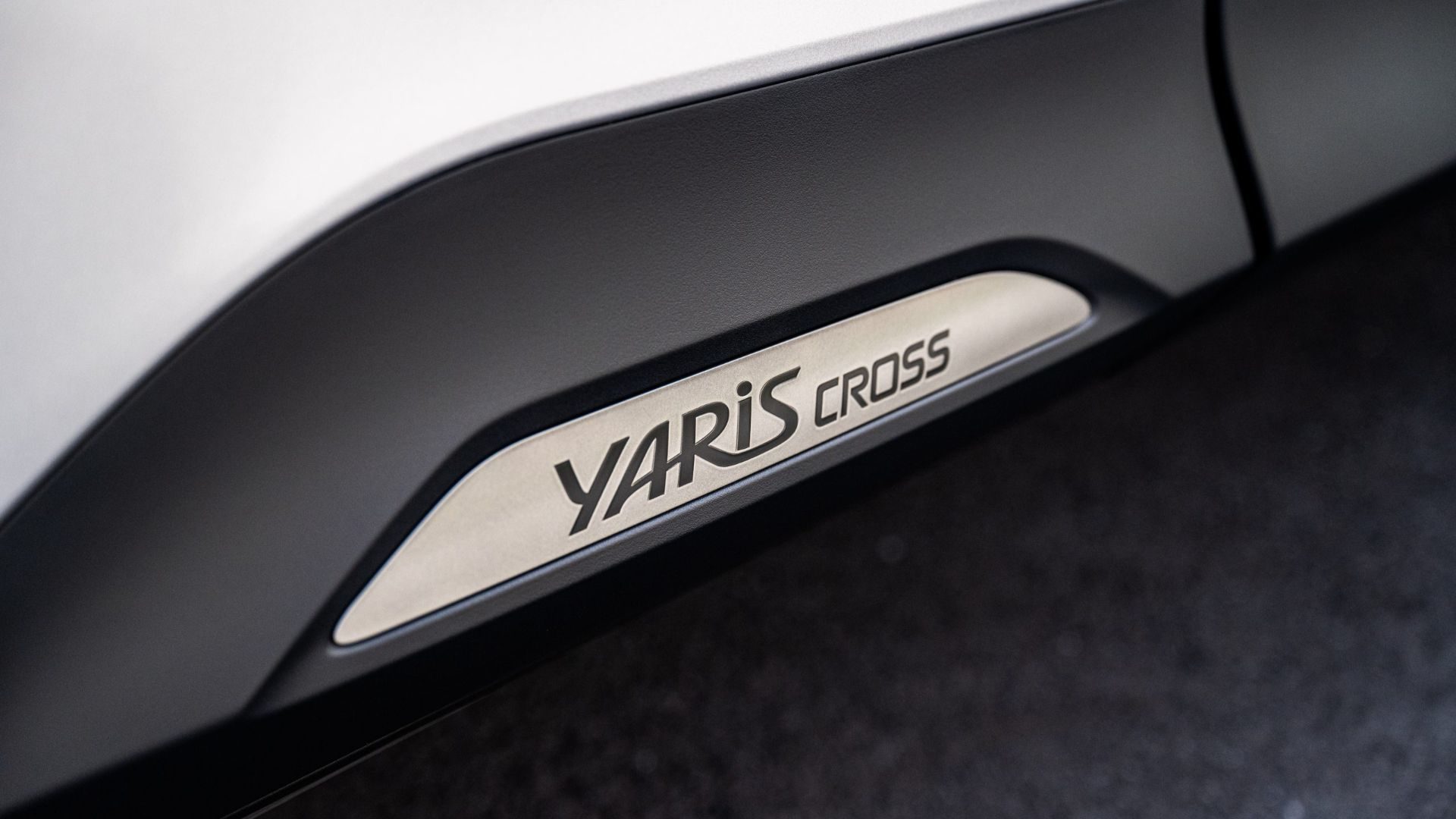
Speaking of specifications, there are four core trim levels (in ascending order): Icon, Design, Excel and Dynamic. A range-topping Premiere Edition is offered for the first year only.
Standard equipment on all models includes climate control air-con, an eight-inch touchscreen media system, automatic headlights and wipers, Apple CarPlay and Android Auto smartphone connectivity, and a reversing camera.
There’s also Toyota Safety Sense: a belt-and-braces active safety package comprising automatic emergency braking, adaptive cruise control, lane-departure warning, emergency steering assist, road sign recognition and more. The regular Yaris scored a maximum five stars in Euro NCAP crash tests, so the Cross will hopefully follow suit.
Toyota expects the entry-level Icon to take 60 percent of sales. It comes with 17-inch alloy wheels, LED headlights and tinted rear glass. My Design-spec car added a couple of additional safety systems (steering assist, traction control), along with a larger digital driver display.
Can touch this
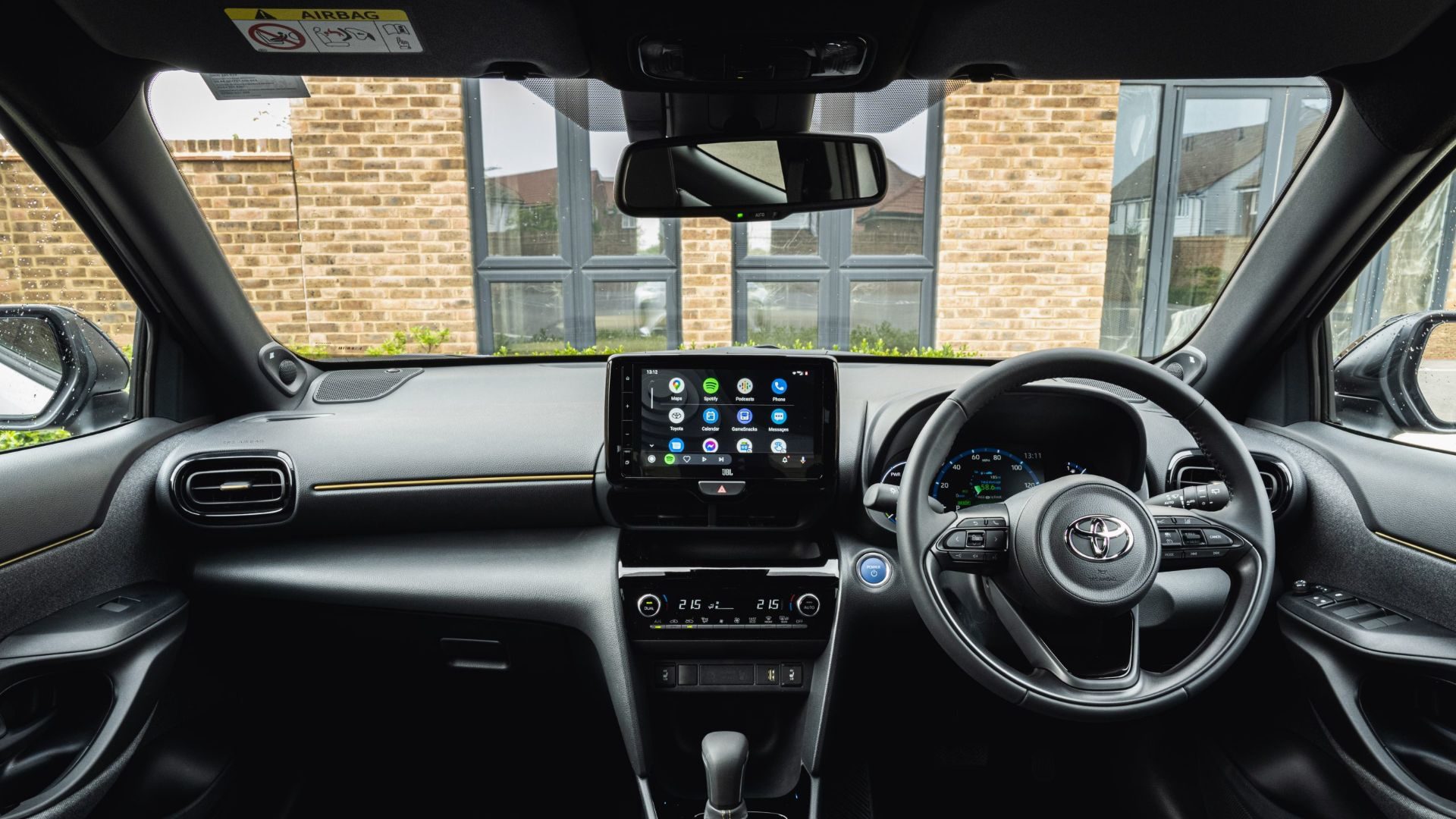
Inside, there’s space for five adults to sit in relative comfort, plus lots of useful stowage space. The plastics are nothing special, but the curvy dashboard is more stylish than the Toyota norm. Pricier versions have subtle ‘Brass Gold’ highlights that stay just on the right side of chintzy, too.
The Toyota Touch 2 system, positioned up-high in your line of sight, has clear graphics and straightforward menus. You’ll also find proper physical controls for the heating and air-con, along with various shortcut buttons on the steering wheel.
The seven-inch digital instrument panel shows, among other things, how far you’ve driven in electric-only EV mode. As I discovered, it’s possible to nudge this figure well above 50 percent around town.
Tax power
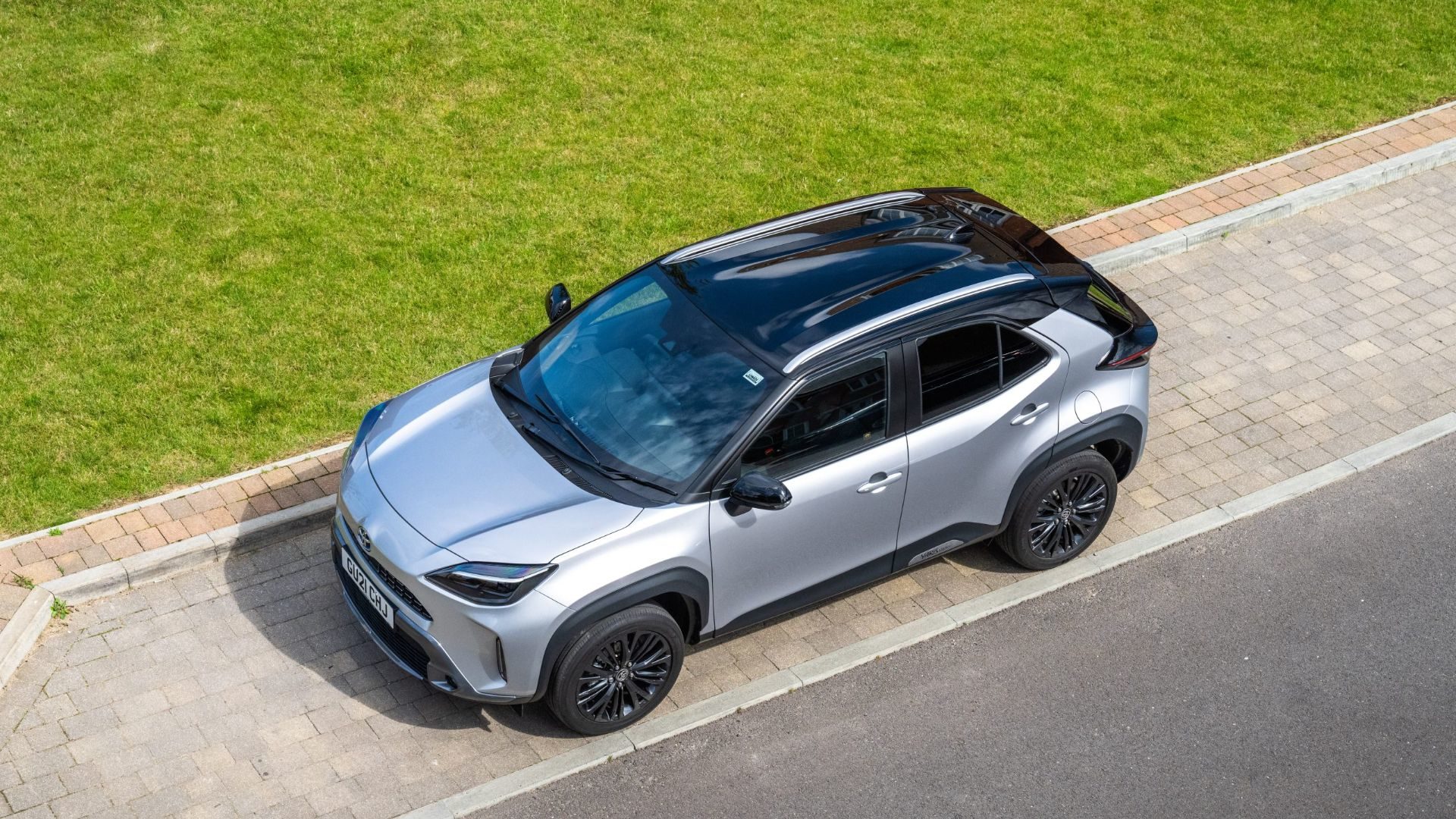
This is what Toyota calls a ‘self-charging hybrid’. In other words, the 1.5-litre petrol engine charges the batteries as you drive; you can’t plug the car in to extend its electric range.
The hybrid system offers some boost to performance, but the Yaris Cross is no firecracker. Zero to 62mph takes 11.2 seconds, or 11.8 seconds for the four-wheel-drive version, with a top speed of 106mph.
Better news comes with the efficiency stats: fuel economy of 54.6-62.8mpg and CO2 emissions from 100-117g/km (depending on wheel size and spec). Running costs will definitely be more ‘supermini’ than ‘SUV’.
Boost from the batteries
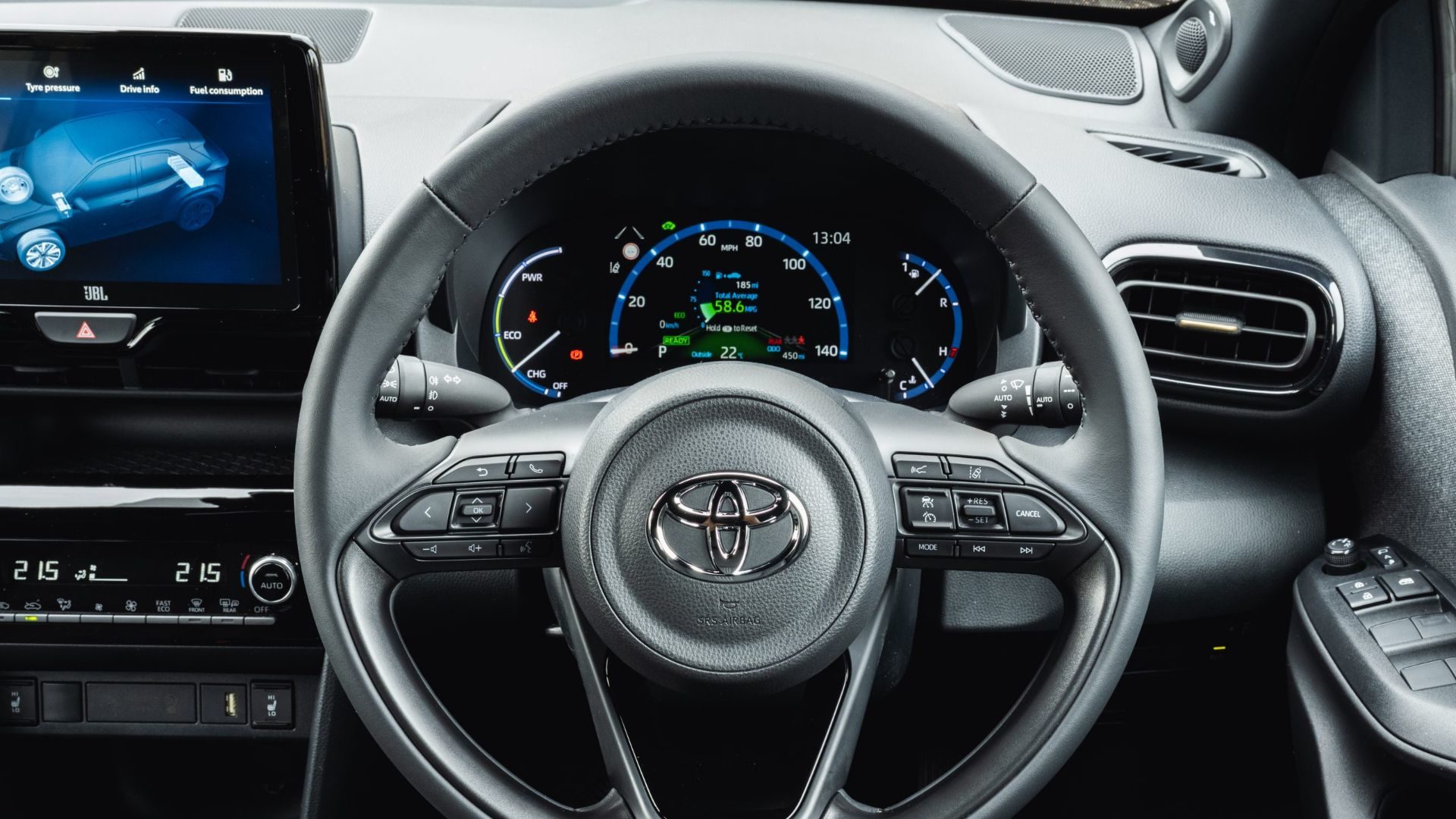
On the road, the instant shove of the electric motor makes the Yaris Cross feel brisk and eager. Its automatic e-CVT ’box is much quicker reacting than Toyota hybrid transmissions of old; the laboured drone that once characterised these cars is gone.
That said, the three-cylinder engine is gruffer and noisier than I expected, but only when worked hard.
Otherwise it’s near-silent or operating in EV mode (with a sci-fi hum at low speeds, generated by an external speaker, to warn slow-witted pedestrians).
Not a GR Yaris
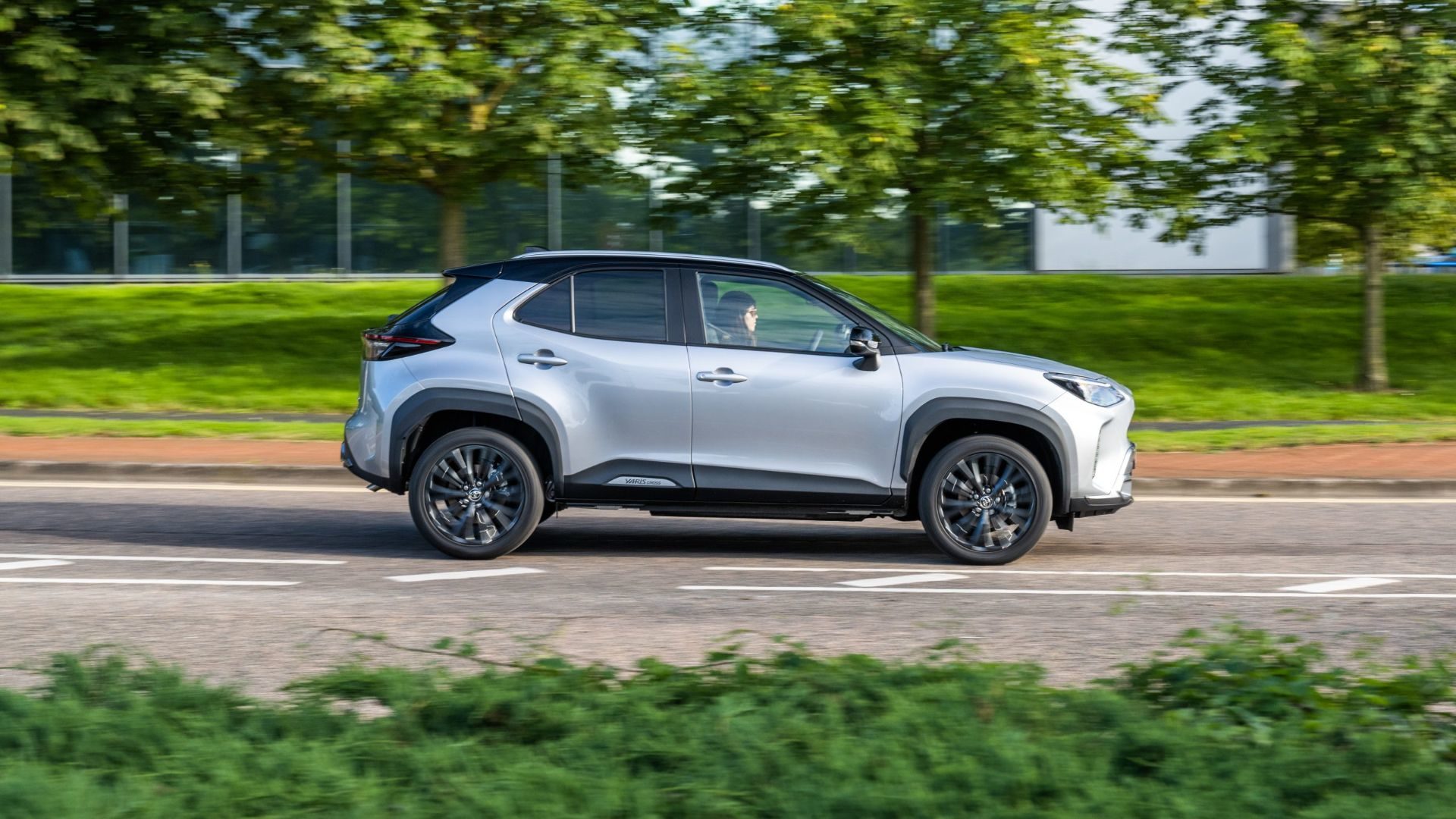
Somehow, we’ve ventured 900 words into this review without mentioning the GR Yaris. Toyota’s hot hatch was last year’s undisputed ‘It car’ – a rally-inspired rocket that can embarrass Porsches on the right road.
The Yaris Cross… isn’t like that. It’s less ‘maximum attack’ and more ‘keep calm and carry on’. Nonetheless, it drives well, with direct steering and a reassuring sense of stability. In dynamic terms, the Ford Puma remains the compact crossover to beat, but the Yaris is better than many.
My only question mark was over the ride, which can be abrupt over obstacles such as speed humps, potholes and expansion joints. Perhaps that’s the price you pay for good body control in a tall and compact car.
A convincing case
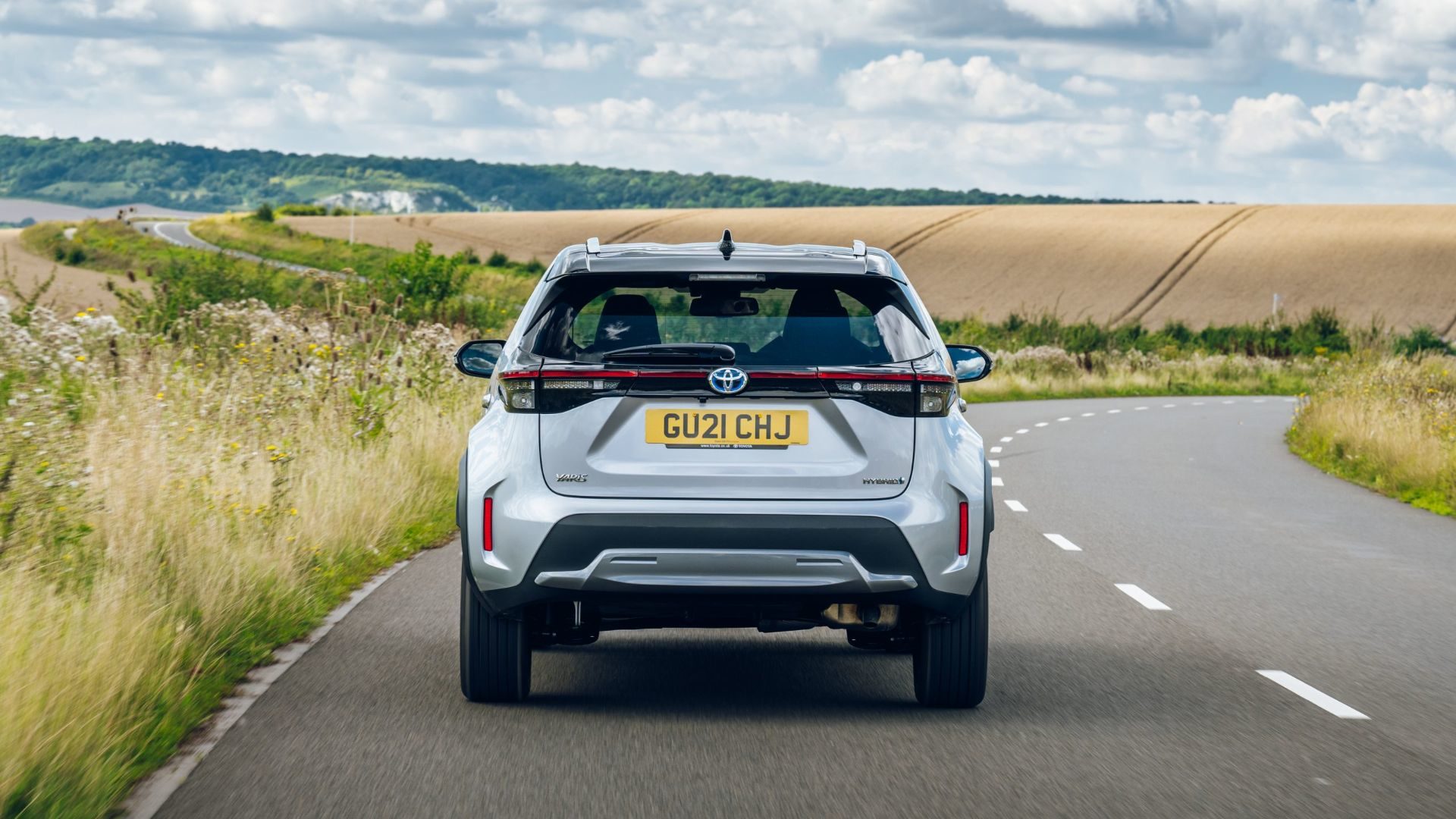
There’s much to like about the Yaris Cross. It takes the critically acclaimed Yaris supermini and makes it more family-friendly. No doubt more fashionable, too.
Factor in Toyota’s industry-leading reputation for reliability, plus the option of a 10-year, 100,000-mile warranty (via the marque’s new ‘Relax’ scheme), and the Yaris makes a convincing case for itself.
ALSO READ:
Toyota spends £1 million to deter catalytic converter thefts
The £46,250 Toyota Corolla: cult-classic AE86 smashes auction record
Lexus NX 450h+ plug-in hybrid 2021 review
Rivals: Nissan Juke, Renault Captur, Volkswagen T-Cross
